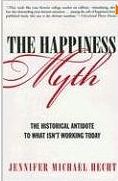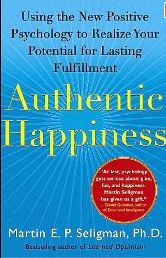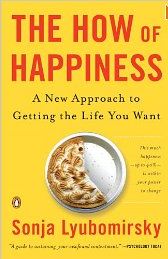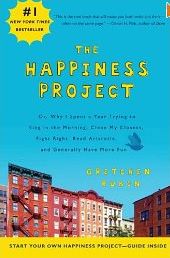People experience greater happiness when they perform specific “prosocial” actions, like trying to make someone smile, rather than pursuing an abstract objective like “trying to make someone happy,” according to University of Houston’s Melanie Rudd, Jennifer Aaker of Stanford and Harvard’s Michael I. Norton.
Fifty volunteers were asked to “make someone happy,” or to “make someone smile,” in exchange for a gift card.
When they completed the task, participants described how they accomplished their assignment, and the degree of happiness they experienced.
Participants who completed the specific goal, “getting someone to smile,” reported greater happiness than those who worked toward the more abstract, “higher construal level” goal of “making someone happy” – no matter which action they performed to achieve the goal.
Specific goals have a “low construal level”, according to Construal Level Theory (CLT), discussed by NYU’s Yaacov Trope and Nira Liberman of Tel Aviv University.
CLT distinguishes concrete, specific, contextualized, and personal actions from more abstract, distant options based on future time, remote space, social distance, and hypothetical probability.
Team Rudd’s findings demonstrate the emotional impact associated with completing specific prosocial tasks.
Rudd and team posited that concrete goals reduce the gap between expected and actual impact of one’s actions, and increase goal clarity, measurability, and achievability while setting more realistic outcome expectations.
The team evaluated this speculation by asking participants to rate the degree of similarity between the actual outcome and their expectations before they performed the specific or general task.
Those who performed the more specific action also reported greater similarity between expectations and actual outcomes, as well as experiencing more happiness as a result of their prosocial actions.
Abstractly-framed goals focus on “why”, broader meaning, and larger purpose, whereas concretely-stated objectives target the “how”, found University of Maryland’s Edwin Locke and Gary Latham of University of Toronto.
Similarly, smaller expectation-reality gaps were linked to greater satisfaction, happiness, and well-being in research by University of Leiden’s Riël Vermunt and Herman Steensma.
Rudd’s group replicated Vermunt and Steensma’s findings, for people had a previous friendship or no previous relationship with the beneficiary, and when the prosocial acts varied in magnitude.
Participants experienced similar degrees of happiness in performing small or large kind deeds, as long as thee specified actions like “increasing recycling of unneeded materials” instead of “supporting environmental sustainability.”
Volunteers were consistently inaccurate in predicting which charitable acts would make them feel most happy 24 hours after they completed the task.
Participants predicted that performing the abstract, “high construal level” task of “making someone happy” would make them happier than the specific task of “trying to make someone smile” – but they actually experienced greater happiness after they did a specific good deed.
Likewise, Wharton’s Gal Zauberman and John G. Lynch of Duke also found that volunteers had inaccurate expectations about future outcomes.
Anyone who has been disappointed when ambitious goals to help others did not result in the desired outcome understands the problems of “donor fatigue” or “helper burnout,” when there is a significant discrepancy between helper expectation and actual outcome.
This anecdotal experience is confirmed by University of Massachusetts Medical School’s University of Massachusetts’s Carolyn Schwarz, Yunsheng Ma, and George Reed, with Janice Bell Meisenhelder of Emmanuel College, who found that discrepancies between expectations and outcomes are linked to giver unhappiness and dissatisfaction.
Rudd and team’s research suggests that much-needed helpers can experience a Helper’s High instead of “helper burnout” when their goals are concretely defined.
Helper’s High is even associated with improved physical health in addition to happiness, according to Fordham University’s Allan Luks.
Helping others is also associated with higher levels of mental health, found Schwartz’s group, although they found less relationship with physical health than Luks.
The Helper’s High has a physiological basis: “Pleasure centers of the brain” are activated when people make voluntary charitable donations as well as after receiving money for oneself, and even more than when individuals agree to a tax-like transfers to a charity, reported University of Oregon’s William T. Harbaugh and Ulrich Mayr, with Daniel R. Burghart of NYU.
Individuals can increase their experience of happiness by engaging in specific kind acts toward others, and philanthropic organizations can increase volunteer retention by framing requests as concrete, “low construal level” actions.
-*To what extent do specific prosocial actions increase your personal happiness?
Follow-share-like www.kathrynwelds.com and @kathrynwelds
RELATED POSTS:
- Most Effective “Calls to Action” Are Aligned to Audience “Construal Level”, Psychological Distance”
- Paradoxical Bias against Innovative Ideas in the Workplace
- Reframing Non-Comparable Choices to Make Them Simpler, More Satisfying
- Buying Happiness: Satisfaction and Material Purchases vs. Experiential “Investments”
Twitter @kathrynwelds
Blog – Kathryn Welds | Curated Research and Commentary
Google+
LinkedIn Open Group Psychology in Human Resources (Organisational Psychology)
Facebook Notes:
©Kathryn Welds


























































 He concluded that money can buy happiness when it’s spent on other people and experiences in
He concluded that money can buy happiness when it’s spent on other people and experiences in 
